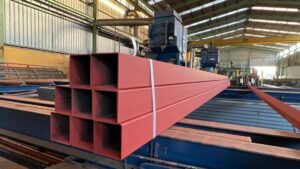
Europe’s steel trade deficit narrowed year-on-year in 2019. However, steelmakers’ association Eurofer has nevertheless reiterated that the current safeguard system results in distortion in certain product imports.
During the first 11 months of 2019 the steel trade deficit in Europe amounted to 1.1 million tonnes; 0.6mt was accounted for by semi-finished products and the balance by finished steel. South Korea was the country with which the trade deficit was largest, followed by Russia and Turkey. The US, Switzerland and Algeria, on the other hand, imported more products than they sold to Europe.
Overall European flat products imports were down -11% y-o-y in 2019, while longs were down -23% y-o-y, Eurofer says in a report seen by Kallanish.
Meanwhile, exports to third countries fell by only -2% during the first 11 months of 2019. Turkey, the US and Switzerland were the main destinations for European exports. Algeria-bound exports finally saw a recovery after many years of correction, growing by over 40% y-o-y in January-November.
“Developments in total imports conceal distortions at the individual product level, which are, in essence, reflecting the flaws of the current safeguard mechanism, and which have resulted in a rush to maximise quarterly quota allowances by several key exporters to the EU such as Turkey and China,” Eurofer explains. The safeguard system thus requires further review, it reiterates.




